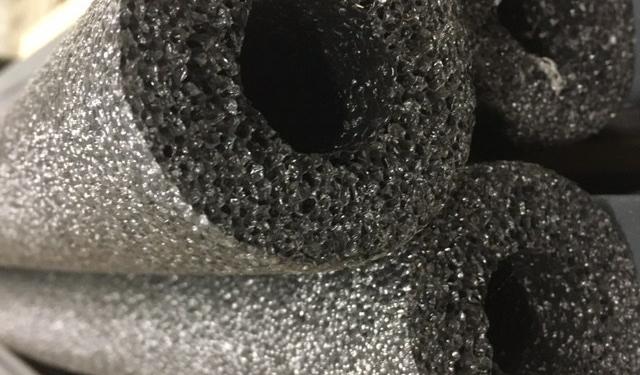source: Nasdaq GlobeNewswire article
PALO ALTO, Calif., Dec. 26, 2017 (GLOBE NEWSWIRE) — Infinity Electrostatics LLC, a technology development firm for additive 3D printing and graphene production, is pleased to announce development of a unique process to produce a continuous formed super-capacitor to store energy.
Using graphene, or eco-friendly hemp and bamboo, almost any carbon-based energy dense material can be used to make a super-capacitor or battery.
Roll forming using a matrix of structural materials and carbon based material (such as graphene, hemp, or bamboo) allows assembly to become a battery or super-capacitor.
Layering of fine particles may be done using electrostatics and a tribo-effect similar to a laser printer. Depending on output layered matrix, the result may be a thread, tube, or meso-scale pole. Flexibility is determined by the infrastructure infusion compound, which allows the final product to be thread, rope, or a structural panel. A continuous form loom can be used to incorporate multiple fiber types, including conductors and optical transmission fiber.
When the infrastructure (supporting) material includes carbon fiber, hemp, or bamboo mat, resin or epoxy infused composites are continuously fed so that the layered material can be vacuum bagged into a solid structure (including a 3D printer). The result of which is a structure which becomes a super capacitor, or energy storage device. Using conventional carbon fiber lay-up methods, this energy storage structure could become a aircraft wing, car body, or a ship hull. When supporting infrastructure material is combined with closed cell foam, or air, the unique insulating qualities of the structure allow it to be used to form flat, or shaped panels.
The process involves roll forming so that a super capacitor may be assembled in a continuous format.
Deposition of fine particles may be done using electrostatics and a tribo-effect gun. Depending on output layered matrix, the result may be a thread, tube, or meso-scale pole. Flexibility is determined by the infrastructure infusion compound, which allows the final product to be thread, rope, or a structural panel. A continuous form loom can be used to incorporate multiple fiber types, including conductors and optical transmission fiber.

In smaller applications, a tunable electrolyte can be used between layers, including CO2. The unique qualities of the supercritical energy dense molecule allow the carbon-based energy tube to be used in energy harvesting. Since CO2 can go supercritical at 31C, low-grade heat can now be used to produce electricity using the qualities of CO2 with tribo-effect.
Graphene is the new environmentally friendly, transparent, go-to material that has incredible opportunities for super capacitors, solar cells, semi-conductors, is impervious to water, temperature changes, and can self-repair its bonds. It is 1000 times more conductive than Copper, 200 times stronger than steel, and doesn’t have the limitations of Silicon.
Summary:
The Infinity Coil is a new energy storage device. Using graphene, eco-friendly hemp, or bamboo, almost any carbon based energy dense material can be used to make a super-capacitor or battery. With a tunable electrolyte, the energy storage device can resemble a solid state power generator. When combined into a structural panel, the device can be used as a aircraft wing, sides of a building, or hull of a ship. What is unique about this product is that it can be scaled up from a thin diameter thread woven into a rope or cable, which can be continuously formed into any shape panels. Using a 3-D printer, the structural applications could be infinite. Using renewable carbon based materials and components, the device is fully recyclable, and good for the environment.
featured image source: Infinity Electrostatics
Infinity Electrostatics LLC develops and markets innovative additive 3D printing technology and applications for Graphene. Emphasis is placed on developing new technology to reduce production time and costs. Please visit http://www.infinityelectrostatics.com for more information.


































